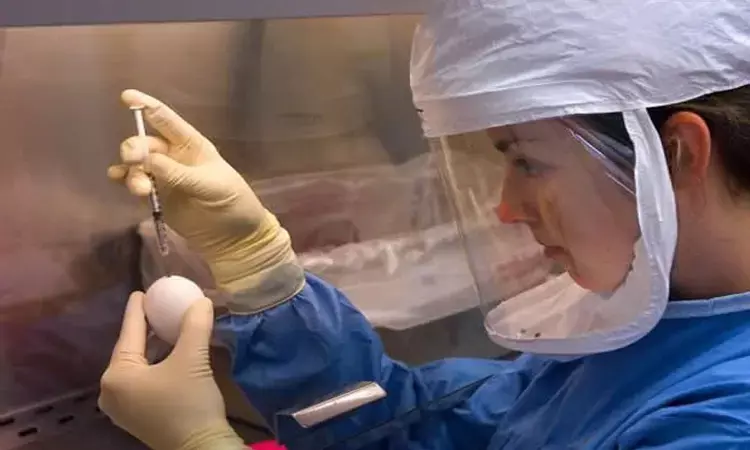- Home
- Medical news & Guidelines
- Anesthesiology
- Cardiology and CTVS
- Critical Care
- Dentistry
- Dermatology
- Diabetes and Endocrinology
- ENT
- Gastroenterology
- Medicine
- Nephrology
- Neurology
- Obstretics-Gynaecology
- Oncology
- Ophthalmology
- Orthopaedics
- Pediatrics-Neonatology
- Psychiatry
- Pulmonology
- Radiology
- Surgery
- Urology
- Laboratory Medicine
- Diet
- Nursing
- Paramedical
- Physiotherapy
- Health news
- Fact Check
- Bone Health Fact Check
- Brain Health Fact Check
- Cancer Related Fact Check
- Child Care Fact Check
- Dental and oral health fact check
- Diabetes and metabolic health fact check
- Diet and Nutrition Fact Check
- Eye and ENT Care Fact Check
- Fitness fact check
- Gut health fact check
- Heart health fact check
- Kidney health fact check
- Medical education fact check
- Men's health fact check
- Respiratory fact check
- Skin and hair care fact check
- Vaccine and Immunization fact check
- Women's health fact check
- AYUSH
- State News
- Andaman and Nicobar Islands
- Andhra Pradesh
- Arunachal Pradesh
- Assam
- Bihar
- Chandigarh
- Chattisgarh
- Dadra and Nagar Haveli
- Daman and Diu
- Delhi
- Goa
- Gujarat
- Haryana
- Himachal Pradesh
- Jammu & Kashmir
- Jharkhand
- Karnataka
- Kerala
- Ladakh
- Lakshadweep
- Madhya Pradesh
- Maharashtra
- Manipur
- Meghalaya
- Mizoram
- Nagaland
- Odisha
- Puducherry
- Punjab
- Rajasthan
- Sikkim
- Tamil Nadu
- Telangana
- Tripura
- Uttar Pradesh
- Uttrakhand
- West Bengal
- Medical Education
- Industry
Can dental procedures be made safer during COVID-19 pandemic: Study

Alexandria, Va., USA --Since It has been a great challenge during COVID-19 pandemic to control dental procedure spray emissions.The potential risk of dental procedure spray emissions for SARS-CoV-2 transmission has challenged care providers and policy makers alike.
Researchers have found in a new study that there are multiple mechanisms for atomization of fluids from rotatory instruments and that parameters can be controlled to modify key spray characteristics during the current crisis.
The study, "Mechanisms of atomization from rotary dental instruments and its mitigation," has been published in the Journal of Dental Research (JDR).
Using high speed imaging and laser light-sheet illumination, procedural sprays were studied with variables including rotation speed, burr to tooth contact and coolant pre-misting. Elimination of pre-misting (mixing of coolant water and air prior to burr contact) and use of relatively low rotation speeds resulted in significant reduction in small droplets. Cutting efficiency was reduced, but sufficient coolant effectiveness appeared to be maintained.
"This research demonstrates that spray from dental instruments can be controlled without losing the ability to carry out dental treatment," said JDR Editor-in-Chief Nicholas Jakubovics. "Being able to modify the spray creates a safer experience for patients and oral health care providers during this current pandemic.
https://journals.sagepub.com/doi/10.1177/0022034520979644
Hina Zahid Joined Medical Dialogue in 2017 with a passion to work as a Reporter. She coordinates with various national and international journals and association and covers all the stories related to Medical guidelines, Medical Journals, rare medical surgeries as well as all the updates in the medical field. Email: editorial@medicaldialogues.in. Contact no. 011-43720751
Dr Kamal Kant Kohli-MBBS, DTCD- a chest specialist with more than 30 years of practice and a flair for writing clinical articles, Dr Kamal Kant Kohli joined Medical Dialogues as a Chief Editor of Medical News. Besides writing articles, as an editor, he proofreads and verifies all the medical content published on Medical Dialogues including those coming from journals, studies,medical conferences,guidelines etc. Email: drkohli@medicaldialogues.in. Contact no. 011-43720751


